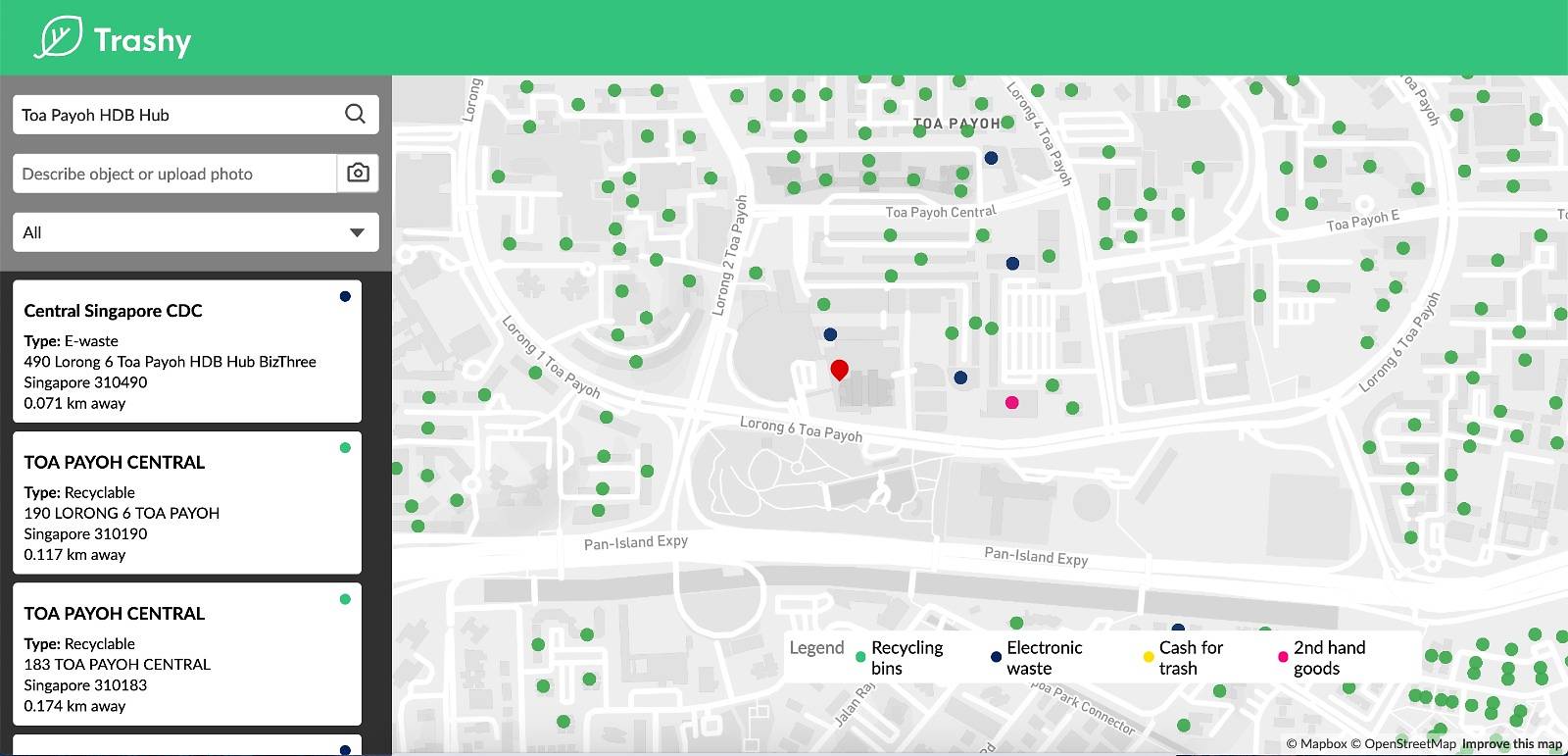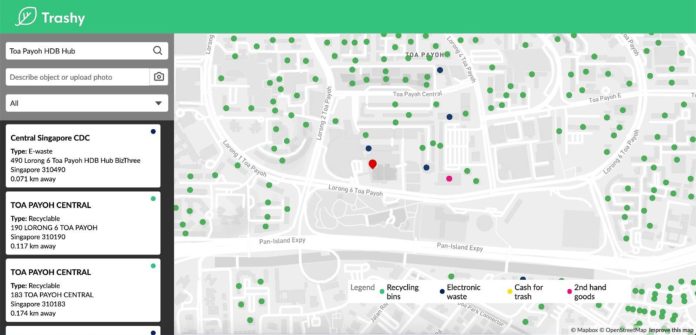SINGAPORE: “When I have something I want to recycle, what can I do?”
That was one of the main problem statements a group of four young engineers at the Government Technology Agency’s (GovTech) Data Science and Artificial Intelligence department were hoping to tackle when they developed their prototype tool – named Trashy – not too long ago.
READ: Singapore to ‘double down’ on artificial intelligence efforts, says Vivian Balakrishnan
Ms Laura Lee, an associate computational scientist, shared how her experience living in London provided the impetus for creating the prototype.
“It is second nature to recycle in London,” Ms Lee recounted during a recent interview with Channel NewsAsia. But when the 27-year-old returned home to Singapore about two years ago, she found it a challenge to do the same.
This experience was shared by another team member, Ms Christabel Neo, who was also based in London.
“Every building has a recycling bin, and you have to separate the rubbish before bringing the waste down to dispose,” explained Ms Neo, an associate software engineer.
Comparing the experience here of disposing rubbish through a centralised rubbish chute system, the 24-year-old posited that this convenience “plays against” encouraging Singaporeans to recycle more of their waste.
She added that while there are the blue recycling bins around, the use of these are usually shared among several Housing and Development Board (HDB) blocks and they are not always easily located.

The prototype tool uses geolocation to identify where the user is, and recommends the nearest places where there are recycling or e-waste bins. (Image: GovTech)
Product manager Lisa Tjide, another team member, went on to point out that waste is very well managed here, and the National Environment Agency (NEA) “is doing a great job”, maybe so much so that consumers here don’t see the need to recycle their waste.
OPEN COLLABORATIONS SPARK IDEAS
These reasons helped spark the development of Trashy, which maps all the recycling bins, electronic waste bins, sites that take in second-hand goods as well as places where you can get “cash for trash”.
The team, which also includes associate software engineer Seah Chin Ying, came up with the idea and prototype during a month-long hackathon organised within the department in January.
The hackathon also led to the introduction of Colourise.sg, an AI-based tool that allows users to bring colour to old black-and-white snaps. It even caught the attention of Prime Minister Lee Hsien Loong, who posted a childhood picture of when he was at Outward Bound Singapore and the results after using the tool.
Trashy could potentially be next in GovTech’s production line of citizen-centric services.
Minister-in-charge of GovTech Janil Puthucheary had mentioned the project during his Committee of Supply debate speech on Smart Nation earlier this month when speaking of Ms Lee’s decision to leave Candy Crush-maker King.com to move to GovTech.
Dr Puthucheary said then that she is “part of a team that is trying to find ways to use technology, machine learning and our Smart Nation platforms to encourage more recycling”.
READ: 7 in 10 people in Singapore do not know what plastics to recycle, SEC report shows
The four twenty-somethings who developed the app are now focused on refining the tool and bringing in new features such as photo identification using machine learning and, through recognising the waste for disposal, recommend to users how to deal with it and where, Ms Lee said.
The information on recycling is publicly available on NEA’s website, she added. But this feature allows for relevant information to be served to users according to their needs, rather than people having to hunt for the data.
Ms Neo shared that the intention is also to open source Trashy’s code, so that other developers can contribute ideas to the tool or even improve on the software on their end.
Her teammate, Ms Tjide, also pointed out how it was easier and much faster to gather a group of like-minded engineers to work on passion projects like this, given that there is a ready pool of technical experts on hand within GovTech.
By comparison, if they had to develop this tool from scratch as a start-up, much time and resources would be spent trying to attract people with the right skillsets to come onboard, she said.
She added the team has talked about the project with other agencies, but Trashy hasn’t yet been put forward to be developed as a full-fledged product.
Any effort to encourage Singaporeans to recycle can be considered a boon to the country’s goals of raising the domestic recycling rate to 30 per cent by 2030 as stated in the Sustainable Singapore Blueprint.
It is currently at 21 per cent, according to 2017 figures provided by the Ministry of the Environment and Water Resources.





